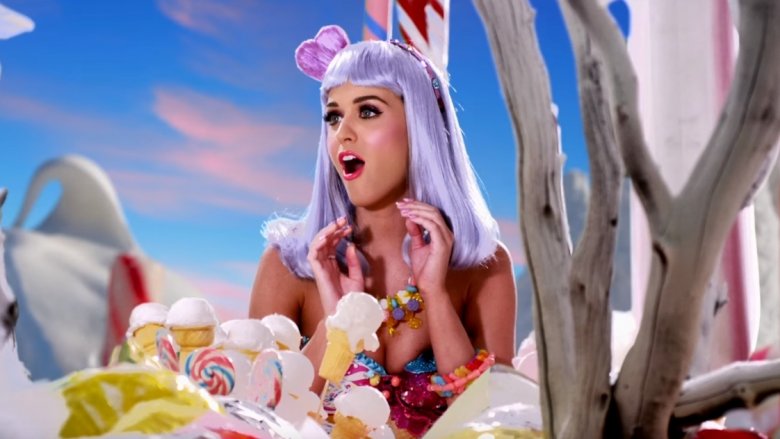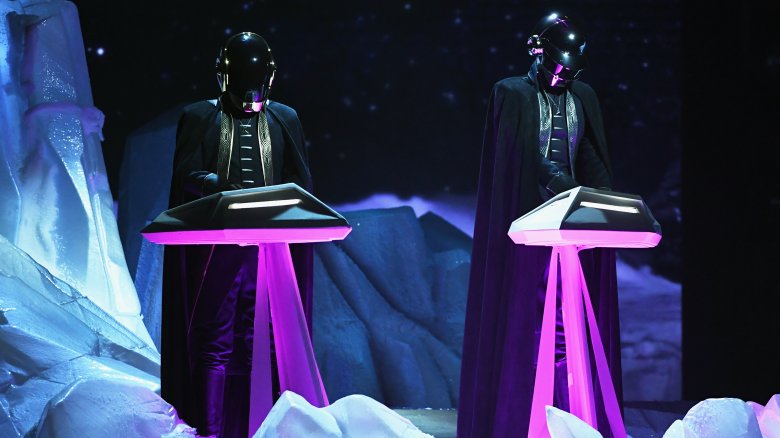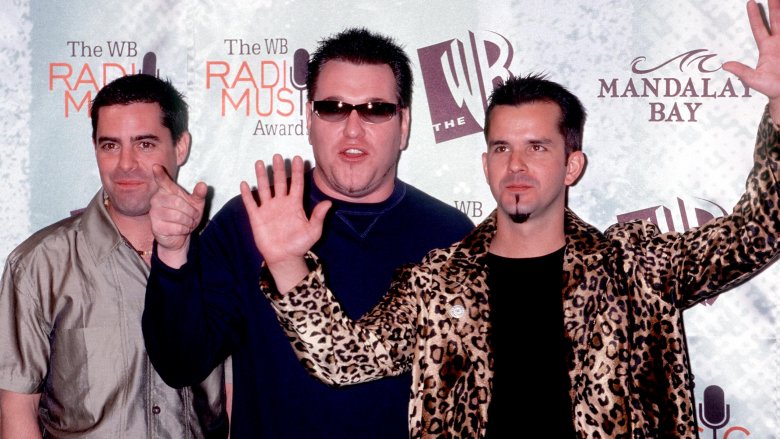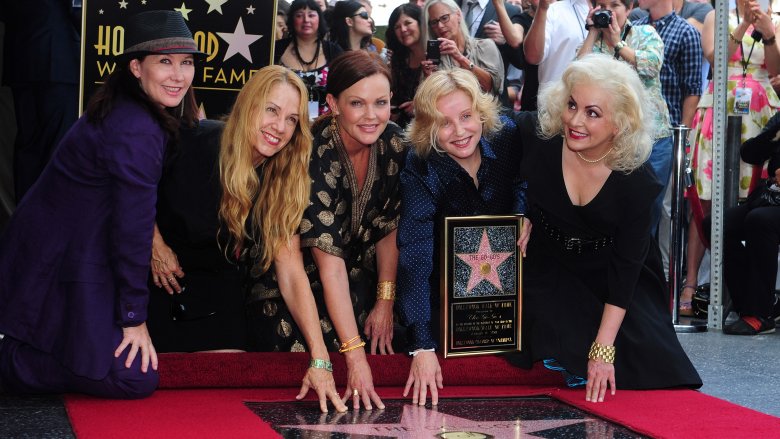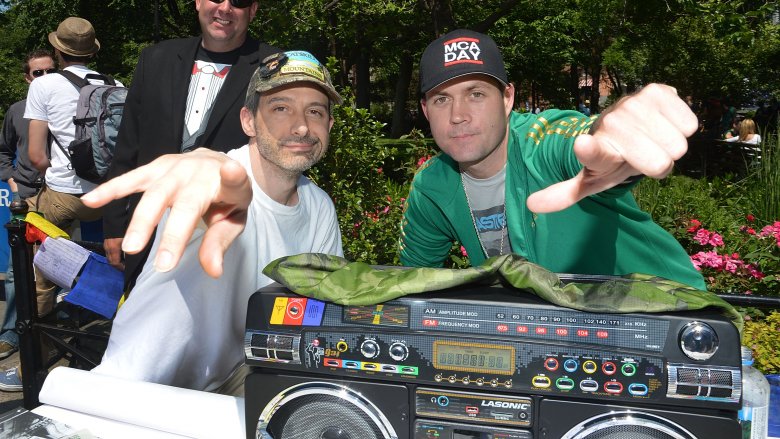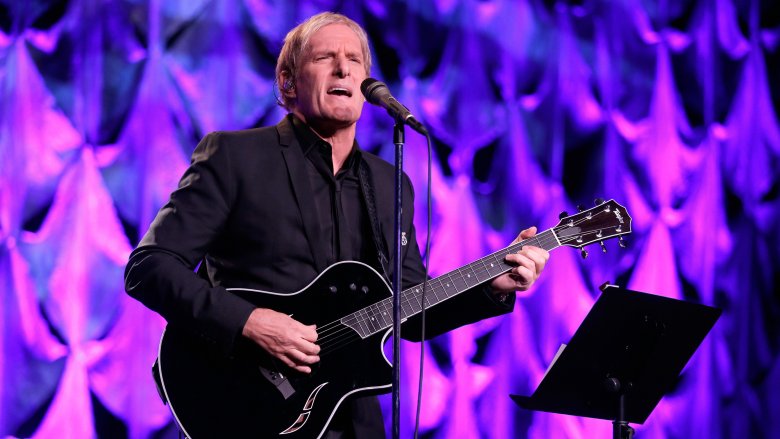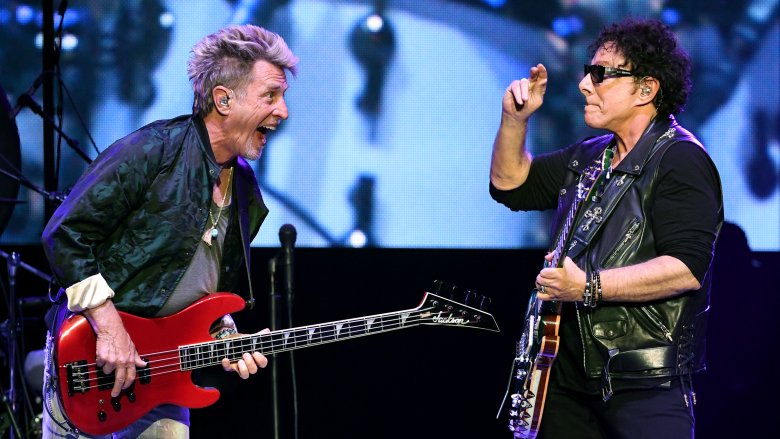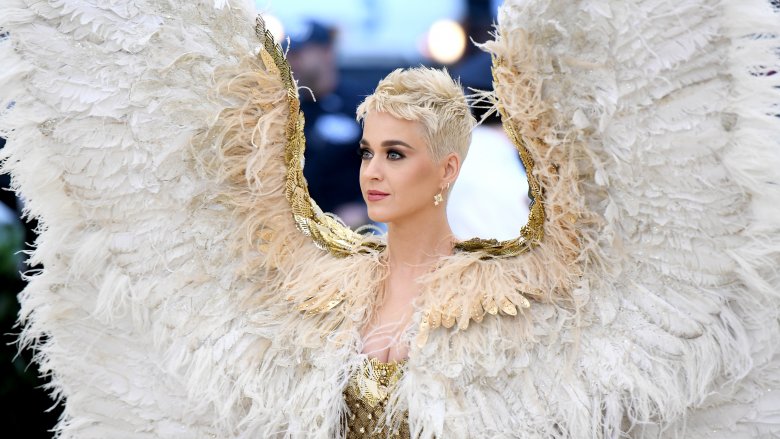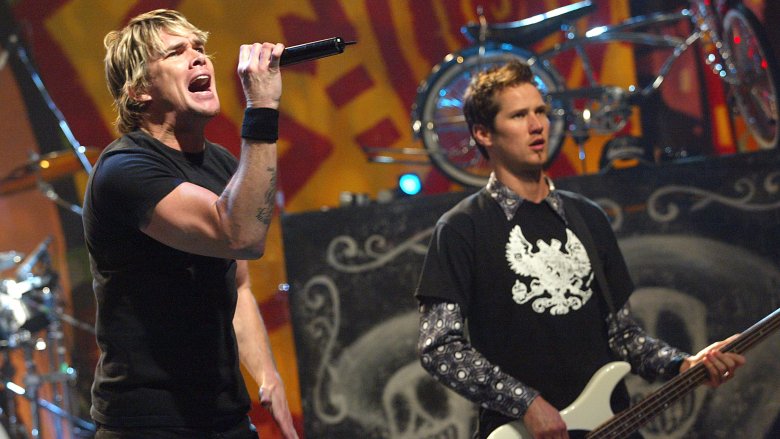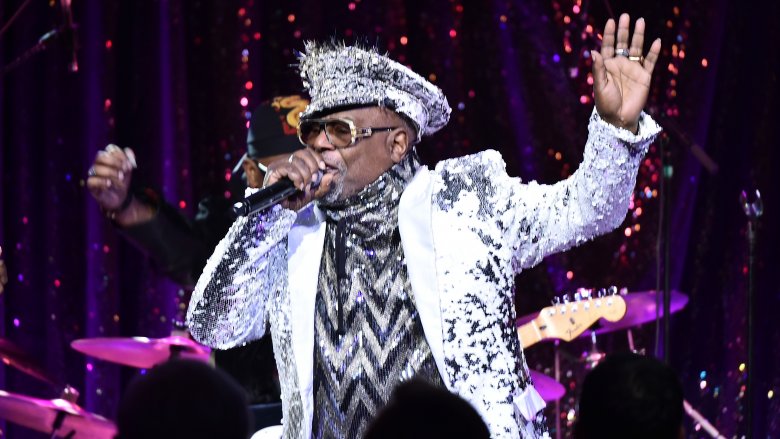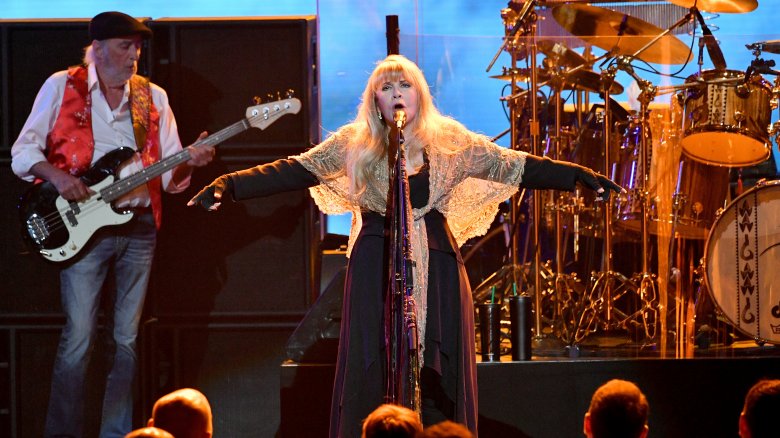Musicians Who Became Huge Stars After They Switched Genres
Creative people can seem kind of magically talented. Since fans only see the end product of their work, it can appear that they just put pen to paper, or brush to canvas, or pick up a guitar and within minutes they've created the thing that made them famous. We rarely experience all the failed attempts that end up on the scrap heap of history — the novels that never make it out of drawers or the paintings that get covered over.
When it comes to musicians, not only does that mean thousands of hours of practice to get anywhere near decent at singing and playing instruments, but sometimes it means they have to mess around a bit before settling on their perfect sound. There are plenty of huge musicians who only got to where they are after wallowing in obscurity in another genre of music. Remember that next time you're exasperated at your creative attempts that just don't seem good enough.
Daft Punk was influenced by the Beach Boys
The electronic band Daft Punk is famous for never taking their helmets off and for epic dance floor fillers. Songs like "Around the World" and "Get Lucky" have earned them millions of record sales and six Grammy Awards. But back in France in the early '90s, they were just two kids who wanted to rock.
According to Daft Punk: A Trip Inside the Pyramid, Thomas Bangalter and Guy-Manuel de Homem-Christo met at school and decided to form a band when they were still teenagers. Along with a third member, they called their rock band Darlin' after a Beach Boys song.
Lacking a record contract or any fancy equipment, they had to record all their songs at home. They managed to put together a tape of a few tracks, including their namesake "Darlin'" and one original one called "Cindy So Loud." After passing the tape on to a band they liked called Stereolab, they were included on a compilation single along with a few other rock groups. It was released under an actual record label but didn't see any commercial success.
The critics may have hated it, but it was a turning point for Darlin'. One magazine reviewer in the U.K. panned their tracks specifically, calling them "a daft punky thrash." They took the name with their growing love of electronic dance music and combine them to make today's Daft Punk.
Smash Mouth liked to rap
Ah, Smash Mouth. These days they're probably most famous for their epic Twitter wars with everyone from the Oakland A's to anyone who dares to question their chart success. But once upon a time they were producing music that lead singer Steve Harwell called "California in a can. Fun in the sun. West Coast party pop." Their hits included "Walkin' On the Sun" and "All Star," the latter forever seared into public consciousness thanks to Shrek. But the band walked a long and winding road to get there.
Harwell started out making completely different music, in a rap group called Freedom of Speech (F.O.S.). He told Stereogum the band members were really into Chuck D and he just decided "I want to be a rapper." They recorded the song "Big Black Boots" and managed to get some airplay on a local station. This, in turn, led to getting signed with a record company, and they prepared to put out a single. Then everything changed, according to Harwell. Snoop Dogg came out and completely mixed up the rap scene! Harwell says he was watching MC Hammer in Las Vegas when he turned to his manager and said, "I'm tired of all this hip-hop sh*t."
Smash Mouth itself actually began as a ska band. Their first album is mostly ska/punk in sound. But they stumbled on "Walkin' On the Sun," realized they had a hit on their hands, and decided to change up their beat.
The Go-Go's just wanted to get laid
New wave girl group The Go-Go's was quintessentially '80s. With their cute outfits and terrible hair, they helped define the music of the era. Their debut album Beauty and the Beat was a smash, hitting No. 1 in the charts and going triple platinum. It produced huge feel-good hits like "We Got the Beat" and "Our Lips Are Sealed." But their poppy sound was a far, far cry from how they started out.
According to Vice, The Go-Go's really wanted to be a punk band. Lead singer Belinda Carlisle left home as a teenager after being inspired by an Iggy Pop album and was soon wearing trash bags and kohl. She met another punk named Jane Wiedlin and they decided to start a group for the completely legitimate reason of wanting to meet boys and be the coolest punks ever. But there was one problem: None of them could play instruments, and Carlisle couldn't sing. At their first show they played three songs and people in the audience just stood there looking mortified or outright laughing. One journalist opined that "The Go-Go's are to music what botulism is to tuna." But it was okay because they were having lots of fun getting drunk and making booty calls to guys.
In 1979 they got a drummer who could actually play and made them practice more than once a month. That's when they started improving, although recordings from live shows at the time are still a bit rough.
The Beastie Boys were very young punks
By all accounts, the Beastie Boys shouldn't have worked. They were three Jewish white boys who somehow managed to dominate hip-hop and rap. Their oeuvre includes classics like "Sabotage," "(You Gotta) Fight For Your Right (To Party)," and "No Sleep Till Brooklyn." The group sold 50 million records and was the third rap act inducted into the Rock and Roll Hall of Fame. But they started out as a hardcore punk band.
They called themselves The Young Aboriginals, according to NME, and formed as a foursome in 1979 when Mike D was only 15. (Their founding bassist, Shatan, often couldn't come to rehearsals because they got in the way of his schoolwork.) They were straight-up punk and were inspired by bands like Black Flag, Misfits, and Dead Kennedys. The guitarist John Berry described them as a jam band that was "scrappy" and "whacking off." But they put the effort in, sometimes playing two shows a night in small, dirty venues. They recorded bootleg tapes and would hand them out to friends.
Their songs included "A**hole!" which "mainly consisted of shouting the name of the song and insulting each band member in turn," a far cry from their later lyrical masterpieces. The group eventually changed their name to the Beastie Boys and released one punk EP in 1982, Polly Wog Stew, but soon switched direction. They had discovered acts like Sugarhill Gang and Grandmaster Flash and were inspired. They started rapping, and the Beastie Boys (as we know them) were born.
Michael Bolton let it rock
Crooner Michael Bolton is known for his beautiful ballads like "How Am I Supposed to Live Without You" and "When a Man Loves a Woman." But originally his music dreams were decidedly different.
Before setting free those dulcet tones that your mother loves, Bolton was in what Rolling Stone describes as a "hard-rocking hair band" called Black Jack. And the hair was indeed epic. The music ... less so. The band was the brainchild of a lawyer who had worked with serious rock groups like Led Zeppelin and Bad Company. And the guitarist, Bruce Kulick, was recruited after he toured Bat Out of Hell with Meatloaf. So despite Bolton's melodious voice not seeming like the logical choice for a rock band, they had some decent credentials. In fact, they were so hard initially that the producer they worked with had to ask them to "take a little edge" off their sound.
Unfortunately, people weren't buying it. Their first album didn't crack the Top 100, and their first single "Without Your Love" didn't even crack the Top 40. Still, the video is fun because everyone has epic manes and Bolton rocks out atop a skyscraper. Their second album went absolutely nowhere, and the band broke up.
Supposedly that wasn't the end of his rock dreams. In Tony Iommi's memoir he claims Bolton auditioned to be the lead singer of Black Sabbath. Bolton says it isn't true, but either way, he switched to ballads and hasn't looked back.
Journey had to be forced to change
Journey is known as one of the ultimate power ballad bands. You're probably already singing "Don't Stop Believin'" in your head, and they had plenty of other hits like "Open Arms" and "Faithfully." They produced an amazing eight multi-platinum albums and two diamond albums, and sold over 75 million records worldwide. In the beginning, though, their sound was a far cry from 1980s rock.
Journey started out with a distinctive jazz-fusion sound that was compared to Santana. This makes sense, since two of the founding members had once belonged to that band. According to Don't Stop Believin': The Untold Story Of Journey, keyboardist Gregg Rolie thought the comparison "screw[ed] up the whole concept" of the band and it started to grate. He especially hated that the fans who showed up to concerts would "expect conga drums."
The group released three albums but failed to light up the charts. Guitarist Neal Schon told AZ Central that the change in sound wasn't really their choice. Instead, their record company gave them an ultimatum: Switch it up and start writing some radio-friendly songs or else. They also had to get a new front man. Well, their manager got a tape of Steve Perry singing, and the rest was history.
Katy Perry rocked out for God
Katy Perry burst onto the scene in 2008 with the hit single "I Kissed a Girl," and we liked it. In the video she writhed with other scantily clad ladies, talking about the enjoyment she got out of cheating on her boyfriend with a chick. Other songs, like "California Gurls" saw her lying around naked and shooting whipped cream out of her bra. It was an extremely far cry from where the pop princess started out, an innocent teenager who released a Christian album.
It was almost inevitable given her upbringing. Perry is the daughter of not one but two pastors and, according to Complex, still has a close relationship with God. She rocked blonde pigtails, an acoustic guitar, and went by her real name, Katy Hudson.
She released a self-titled album in 2001 when she was just 16. It had all the signs of doing well. The critics loved it, and she got praise from outlets like AllMusic, Christianity Today, and even Billboard. There was an inkling of the Perry that would become famous — one reviewer said her songs were "pure ear candy," the big difference being they came "with the message that we're being molded perpetually into Christ's image."
She promoted the album by touring with some big Christian bands. She was talented, and it should have been huge. Amazingly, the record only sold an embarrassing 200 copies. So it's not surprising Perry ended up going for something more mainstream: money.
Sugar Ray were headbangers
For a few years in the 1990s, you could not escape Sugar Ray. They dominated pop radio with hits like "Every Morning" and "Someday." Their album 14:59 went triple platinum, so if you were a '90s kid there's a good chance you owned it. But their mainstream success only came by accident — originally they were a metal band.
It makes sense when you hear who influenced their first sound. In an interview with Hip, lead guitarist Rodney Sheppard said the group loved bands like the Sex Pistols, Rage Against the Machine, Ted Nugent, and Korn. In fact, they once opened for the Sex Pistols, as well as KISS. According to Noisecreep, lead singer Mark McGrath describes himself as "an unapologetic metalhead."
Their music from this time is shocking if you were unaware of it. In the song "Mean Machine," McGrath screams out lyrics in a gravelly voice while the rest of the band shreds and head bangs. The video even features a mosh pit.
They might have continued languishing in relative indie obscurity if not for an epic fight. One day a rehearsal didn't go well, and McGrath stormed off. So their bassist just started messing around on his instrument and the DJ added a drum loop, and within five minutes they had written the song "Fly." It was their only pop song on the metal-heavy album Floored, which came with a "Parental Advisory" label. The song hit No. 1, and they ditched the hard sound completely to fully embrace pop.
Parliament-Funkadelic was a wholesome doo-w*p band
Parliament-Funkadelic (or P-Funk if you're really groovy) is famous for being an out-there band of the 1970s. Their music was not only funky but extremely psychedelic with songs like "Give Up The Funk (Tear The Roof Off The Sucker)" and "One Nation Under a Groove." Headed by George Clinton, they would score 13 Top 10 hits. But originally, the rainbow-dreadlocked Clinton was really in love with doo-w*p.
According to PBS, he formed his first band, the Parliaments, in the mid-1950s. They were a literal barbershop group, coming together in the place Clinton worked doing hair. Eventually he moved from New Jersey to Detroit to work as a writer at Motown. Clinton told NPR he was right in the heart of the scene, living blocks from The Monotones and from Frankie Valli and the Four Seasons. The rest of the group stayed on the East Coast, but they continued to work together.
They recorded a few songs, including 1967's "(I Wanna) Testify," which made it to No. 3 on the Billboard R&B chart. It would be their only success. Their record company went bankrupt that year and suddenly the group didn't have the legal right to their name. It was almost perfect timing, because the era of doo-w*p was coming to an end. Clinton started listening to English bands like Cream and the Rolling Stones and was inspired. So the band ditched their suits and became hippies.
Fleetwood Mac had a bluesy sound
Fleetwood Mac is one of the biggest bands of all time. They've sold more than 100 million records worldwide, 40 million of which came from their smash Rumors, the eighth best-selling album of all time. They have been inducted into the Rock and Roll Hall of Fame and are known for hits like "Don't Stop" and "Rhiannon." But the original version of the band, sans most of the more famous members, was much more interested in blues than rock.
Mick Fleetwood, told U.S. News and World Report he was absolutely hopeless in school, probably because he had a learning disability. So amazingly his parents were cool when he said, at the young age of 16, that he was dropping out and becoming a musician. He left for London with his drum kit. The San Diego Tribune says he spent some time in the band Bluesbreakers before he and the bassist decided to go start their own group. Fleetwood Mac was born.
Influenced by their talented guitarist, the early version of the band was all blues all the time. And they did manage to find some success. They actually had a No. 1 hit in Britain with "Albatross" but were virtually unknown in the United States. Still, they came to Chicago to play blues with some of the greats. But in 1970 their guitarist left, and they slowly added new musicians like Christine McVie, Stevie Nicks, and Lindsey Buckingham. This changed their sound to the pop-rock they're most famous for.
